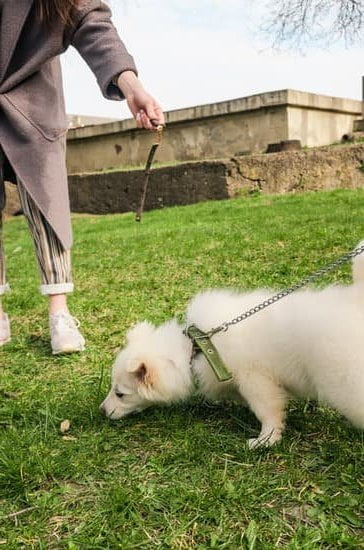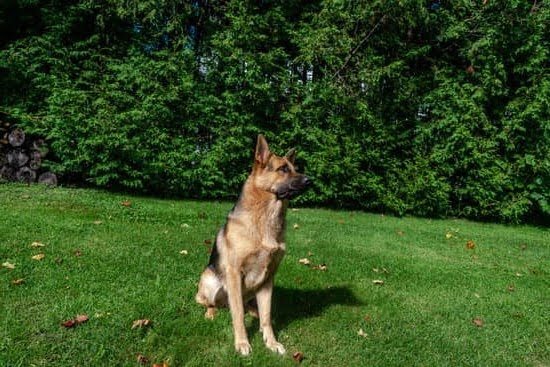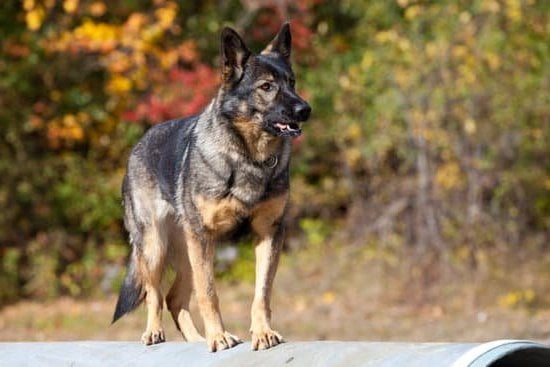Struggling to train a dog with no attention span can be a common challenge for many pet owners. From easily distracted puppies to older dogs with a short focus, it’s important to understand the reasons behind their behavior in order to effectively train them. This article will explore various techniques and strategies to help you train a dog with a short attention span, providing valuable insights into this common issue.
Assessing the breed and individual characteristics of your dog is an essential first step in understanding their attention span. Different breeds may have varying levels of focus and energy, while individual personalities play a significant role in how easily they can be trained. By recognizing these differences, you can tailor your approach to training and set realistic expectations for your furry companion.
Establishing a consistent and positive training routine is crucial when dealing with a dog that has trouble staying focused. Using high-value treats and rewards can help capture your dog’s attention, making the training process more enjoyable for them. Short and focused training sessions, along with mental stimulation and interactive toys, can also play a key role in keeping your dog engaged during training.
Utilizing positive reinforcement and patience is essential, as well as seeking professional help when needed. Ultimately, consistency, repetition, and patience are the keys to successfully training a dog with a short attention span.
Assessing the Breed and Individual Characteristics of Your Dog
When it comes to training a dog with no attention span, understanding the breed and individual characteristics of your furry friend is crucial. Different breeds have different levels of energy, focus, and trainability. For example, high-energy breeds such as border collies may require more mental stimulation and physical activity to maintain their attention during training sessions. On the other hand, some breeds may have a natural propensity for focus and obedience.
To assess your dog’s individual characteristics, observe their behavior in various situations. Notice what captures their attention, what motivates them, and how they respond to commands and rewards. Understanding your dog’s unique personality will help you tailor your training approach to suit their specific needs.
To further evaluate your dog’s attention span and capacity for training, consider seeking professional guidance from a certified dog trainer or behaviorist. These experts can provide valuable insight into your dog’s behavior and offer personalized strategies for training a dog with a short attention span.
Some key points to consider when assessing the breed and individual characteristics of your dog include:
- Observing their response to commands and rewards
- Noticing what motivates them during training sessions
- Seeking professional guidance if needed
Establishing a Consistent and Positive Training Routine
Dogs, just like people, can have different levels of attention spans. Some breeds and individual dogs may have shorter attention spans than others, making training a bit more challenging. However, with the right approach and mindset, it is possible to effectively train a dog with no attention span.
One of the first steps in training a dog with a short attention span is to establish a consistent and positive training routine. Dogs thrive on routine and structure, so it’s important to create a predictable training schedule for them. This means setting aside specific times each day for training sessions and sticking to that schedule as much as possible.
When creating a training routine for a dog with no attention span, it’s important to keep the sessions short and focused. Dogs with shorter attention spans are more likely to get distracted or bored during extended training sessions. By keeping the sessions brief and to the point, you can maximize your dog’s focus and engagement.
In addition to regular training sessions, incorporating mental stimulation and interactive toys into your dog’s daily routine can help improve their attention span over time. Interactive toys such as puzzle feeders and treat dispensing toys can provide mental exercise for your dog, helping them stay engaged and focused during training sessions.
| Approach | Description |
|---|---|
| Consistent Training Routine | Create a predictable training schedule |
| Short and Focused Sessions | Keep training sessions brief and to the point |
| Use of Interactive Toys | Incorporate mental stimulation into your dog’s daily routine |
Using High-Value Treats and Rewards to Capture Your Dog’s Attention
Dogs with short attention spans can be challenging to train, but using high-value treats and rewards can help capture their focus and motivate them during training sessions. When a dog is easily distracted, it’s important to find ways to keep their attention and reinforce positive behavior.
High-value treats are those that your dog finds particularly enticing, such as small pieces of cheese or cooked meat. These treats should be reserved specifically for training sessions, so your dog knows that they will receive something special when they pay attention and follow commands.
In addition to high-value treats, using other rewards such as praise, petting, or playtime can also be effective in capturing your dog’s attention. Positive reinforcement is key in training a dog with a short attention span, as it helps create a positive association with the desired behavior. By consistently rewarding your dog when they exhibit the behavior you want to encourage, you are more likely to see improvements in their focus and responsiveness during training.
It’s important to remember that each dog is unique, so it may take some trial and error to figure out what motivates your individual pet. Some dogs may prefer food rewards, while others may respond better to toys or affectionate praise. Being attuned to your dog’s preferences and adjusting your rewards accordingly can greatly improve the effectiveness of training sessions.
| High-Value Treats | Other Rewards |
|---|---|
| Small pieces of cheese | Praise |
| Cooked meat | Petting |
| Freeze-dried liver treats | Playtime |
Implementing Short and Focused Training Sessions
Training a dog with a short attention span can be challenging, but implementing short and focused training sessions can greatly improve their ability to learn and retain information. In this section, we will discuss the importance of keeping training sessions brief and efficient, as well as how to structure them for maximum impact.
Benefits of Short Training Sessions
Short training sessions are crucial when working with a dog that struggles to maintain focus. By keeping sessions brief, you can prevent your dog from becoming bored or overwhelmed, ultimately leading to better results. Dogs with short attention spans tend to respond better to shorter bursts of training, allowing them to stay engaged and attentive throughout the session.
Structuring Training Sessions
When planning short and focused training sessions, it is important to have a clear plan in mind. Start by identifying specific behaviors or commands you want to work on with your dog. Break down the training into small, manageable steps, focusing on one behavior at a time. Be sure to keep the pace brisk and engaging, avoiding long periods of repetition that may cause your dog to lose interest.
Tips for Success
To ensure success with short and focused training sessions, it is essential to be organized and consistent. Set aside designated time each day for training, keeping the sessions no longer than 10-15 minutes at a time. Use high-value treats or rewards to capture your dog’s attention and reinforce positive behaviors. With patience and dedication, you can help your dog build focus and make progress in their training journey despite their limited attention span.
By implementing these strategies for short and focused training sessions, you can effectively train a dog with no attention span while maximizing their learning potential.
Incorporating Mental Stimulation and Interactive Toys Into Training
Dogs with short attention spans can greatly benefit from mental stimulation and interactive toys during training. This section will explore the importance of incorporating these elements into your training routine.
The Importance of Mental Stimulation
Dogs, like humans, need mental stimulation to stay engaged and focused. For dogs with short attention spans, mental stimulation is crucial to keep them interested in training sessions. Mental stimulation can come in the form of problem-solving games, treat puzzles, or interactive toys that require the dog to think and strategize. By engaging their minds, you can help increase their attention span and make training more effective.
Selecting the Right Interactive Toys
When choosing interactive toys for your dog, consider their individual preferences and tendencies. Some dogs may be more motivated by toys that dispense treats when they are able to solve a puzzle, while others may enjoy toys that require them to manipulate objects in order to access a hidden reward. By selecting the right interactive toys for your dog, you can ensure that they are both mentally stimulated and motivated during training sessions.
Incorporating Interactive Toys Into Training
During training sessions, incorporate interactive toys as part of the activities or exercises. For example, you can use a treat-dispensing toy to reward your dog for following a command or completing a task successfully. This not only keeps them engaged but also reinforces positive behavior through play and interaction. By integrating interactive toys into training, you can make learning more enjoyable for your dog and improve their ability to focus on the task at hand.
By incorporating mental stimulation and interactive toys into your training routine, you can effectively capture the attention of a dog with a short attention span and make the most out of each session.
Utilizing Positive Reinforcement and Patience
Training a dog with a short attention span can be challenging, but it is not impossible. Utilizing positive reinforcement and patience is key to helping your furry friend improve their focus during training sessions. Positive reinforcement involves rewarding your dog with treats, praise, or toys when they exhibit the desired behavior. This method can be highly effective in capturing your dog’s attention and motivating them to participate in training.
Patience is also crucial when training a dog with a short attention span. It’s important to remember that dogs, like humans, have different learning capabilities and attention spans. Some dogs may require more time to understand and retain commands, so it’s essential to remain patient throughout the training process. Getting frustrated or losing your temper will only hinder the progress of your dog’s training.
It’s important to keep in mind that every dog is unique, and what works for one may not work for another. Therefore, it’s crucial to be patient and adapt your training methods based on your dog’s individual characteristics and response to different techniques. By using positive reinforcement and maintaining patience, you can effectively train a dog with no attention span while strengthening the bond between you and your canine companion.
Seeking Professional Help and Guidance When Needed
Training a dog with no attention span can be a challenging task, and sometimes seeking professional help and guidance is necessary to achieve success. If you find yourself struggling to make progress with your dog’s training, it may be time to consult with a professional dog trainer or behaviorist. Here are some reasons why seeking professional help might be the best option for you and your furry friend:
- Expertise: Professional trainers and behaviorists have extensive knowledge and experience working with dogs of all breeds and temperaments. They can provide valuable insights into your dog’s behavior and offer personalized training plans tailored to your dog’s specific needs.
- Behavior assessment: A professional can conduct a thorough assessment of your dog’s behavior to identify the underlying reasons for their short attention span. Understanding the root cause of the problem is essential for developing an effective training approach.
- Specialized techniques: Professional trainers have access to a wide range of training techniques and tools that may not be readily available to pet owners. They can introduce specialized methods to capture your dog’s attention and modify their behavior effectively.
In addition to seeking professional help, it’s important to remember that consistency, repetition, and patience are key factors in successfully training a dog with a short attention span. Your commitment to providing structured training sessions, using positive reinforcement, and incorporating mental stimulation will ultimately contribute to the progress of your dog’s training journey.
Consistency, Repetition, and Patience
In conclusion, training a dog with a short attention span can be challenging, but with the right strategies and patience, it is definitely achievable. Understanding the reasons behind your dog’s lack of focus, whether it’s due to breed characteristics or individual personality traits, is crucial in tailoring an effective training approach. It’s important to establish a consistent and positive training routine to create a sense of predictability and stability for your pup.
Using high-value treats and rewards can help capture your dog’s attention during training sessions. Additionally, implementing short and focused training sessions, along with mental stimulation and interactive toys, can make the learning process more engaging for your furry friend. It is essential to utilize positive reinforcement and have patience when working with a dog that has a short attention span.
Lastly, seeking professional help and guidance when needed can provide valuable insights and techniques for effectively training a dog with no attention span. Consistency, repetition, and above all, patience are the keys to success in overcoming the challenges of training a dog with a short attention span. With dedication and the right approach, you can build a strong bond with your pet while helping them develop good behaviors.
Frequently Asked Questions
How Do You Train a Dog With No Focus?
Training a dog with no focus can be challenging, but it’s not impossible. Start by finding a quiet, low-distraction environment to work in and use high-value treats or toys to grab their attention. Gradually increase the level of distraction as they improve.
Why Is My Dogs Attention Span So Short?
A dog’s attention span can be short for several reasons, including breed characteristics, age, or lack of mental stimulation. It’s important to provide regular and varied mental and physical exercise to help improve their focus and attention span.
What to Do With a Dog That Needs Constant Attention?
A dog that needs constant attention may benefit from structured playtime, interactive toys, and obedience training to redirect their need for attention in a positive way. Additionally, making sure they are getting enough physical and mental exercise can help reduce their neediness.

Welcome to the blog! I am a professional dog trainer and have been working with dogs for many years. In this blog, I will be discussing various topics related to dog training, including tips, tricks, and advice. I hope you find this information helpful and informative. Thanks for reading!





